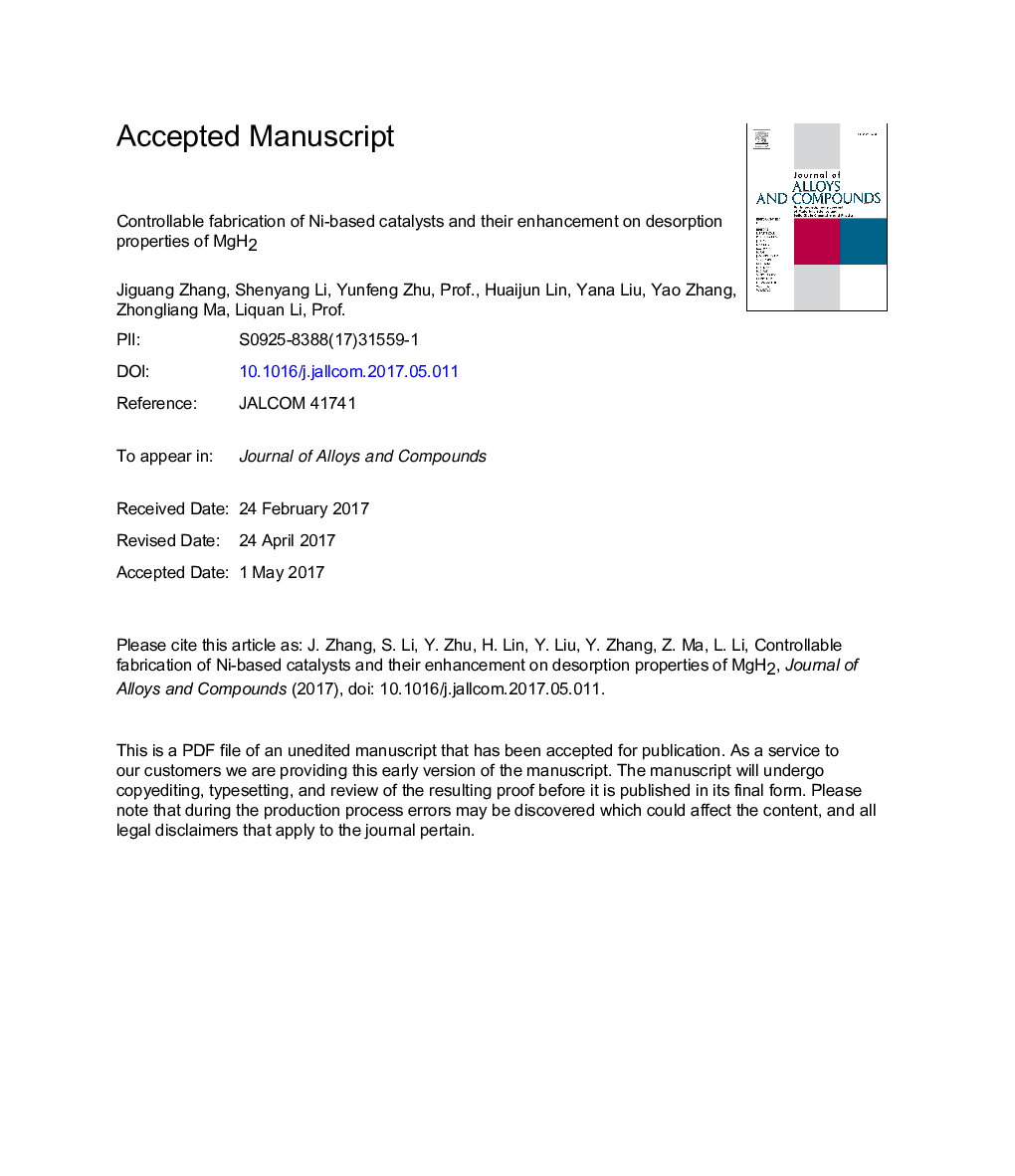| Article ID | Journal | Published Year | Pages | File Type |
|---|---|---|---|---|
| 5459198 | Journal of Alloys and Compounds | 2017 | 38 Pages |
Abstract
Searching for effective catalysts is one of the most attractive subjects to enhance the hydrogen storage properties, especially the sorption kinetics of the metal-based hydrides. The effect of the Ni morphology (including size and shape) on the desorption performance of MgH2 was studied in the paper, in which a modified wet chemical route was used to control the morphology of Ni. By introducing the as-synthesized Ni-based catalysts into MgH2, a well-distinguished desorption behavior was found, evidencing the existence of the morphology-dependent effect of the catalytic phase. Among them, graphene sheets (GS) supported Ni (Ni6GS4) exhibited the best catalytic performance with a lowered MgH2 onset desorption temperature of 225 °C (the undoped MgH2 initiated to desorb hydrogen at 308 °C) and a saturated hydrogen desorption capacity of 6.74 wt%. The significant enhancement of the hydrogen storage kinetics was ascribed to not only the relative small particle size of the initial Ni active phase but also its well-dispersed distribution state and further refinement during ball milling. In addition, we believe that the good dispersive ability of GS was of particular importance in separating the Ni nanoparticles from each other and preventing aggregating of the MgH2 particles, leading to a desirable cyclic performance. Our results have experimentally shown the influence of shape and size of metal-based catalysts on the MgH2 system, providing guideline or strategy designing nanostructured catalysts with light weight, ultra-fine particle size, well-formed distribution and high activity.
Related Topics
Physical Sciences and Engineering
Materials Science
Metals and Alloys
Authors
Jiguang Zhang, Shenyang Li, Yunfeng (Prof.), Huaijun Lin, Yana Liu, Yao Zhang, Zhongliang Ma, Liquan (Prof.),
